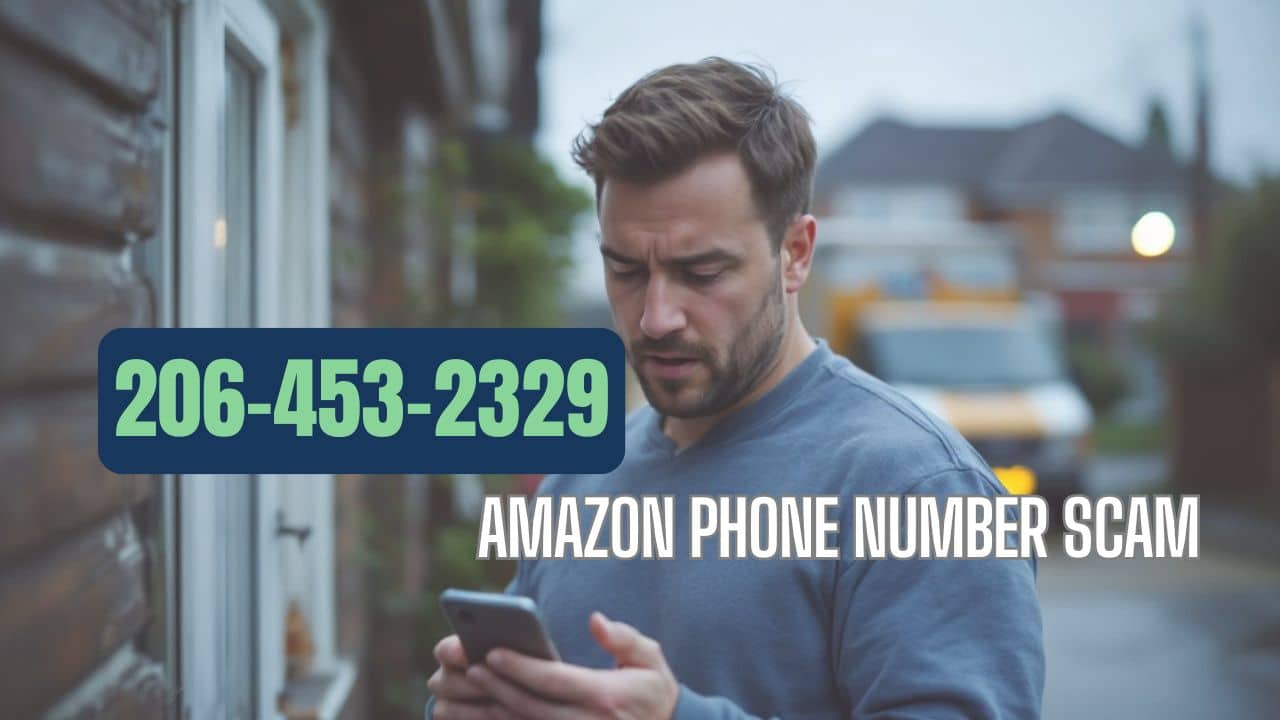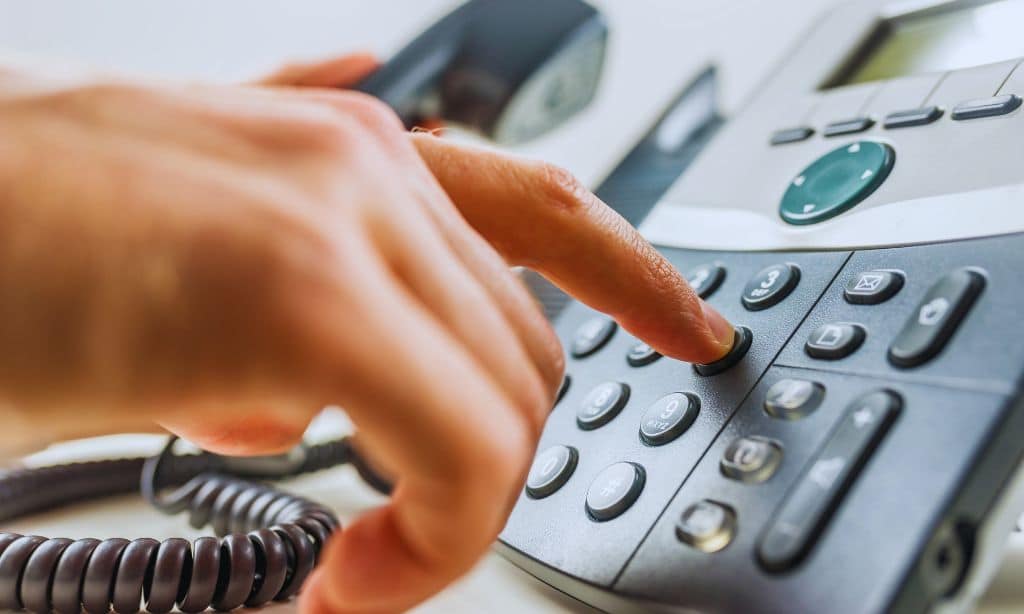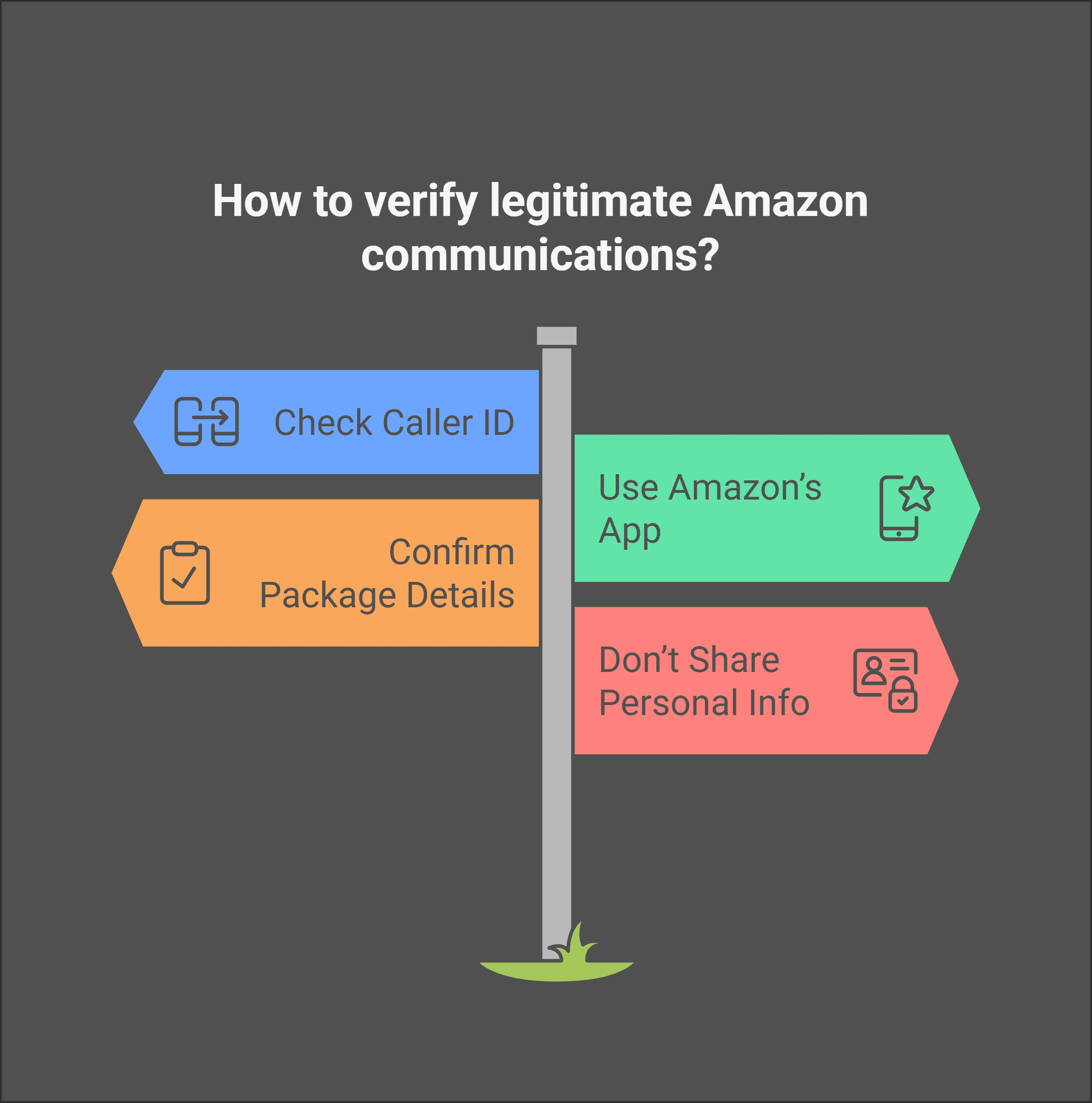Scammers are pretending to be Amazon delivery drivers and calling from numbers like 2064532329. Many users report this number as spam, with fake calls tricking people into sharing private information.
This guide will help you spot red flags, stay safe, and take action against these scams. Don’t fall for the trap—keep reading!
Key Takeaways
- Scammers use fake numbers like 206-453-2329 and pretend to be Amazon delivery drivers. They try to steal personal information, passwords, or account details.
- Tactics include asking for “delivery codes” or “passwords,” sending phishing links, or making rushed calls at odd hours. Legit Amazon drivers do not request such info over the phone.
- Verify suspicious calls by checking your Amazon app for updates and contacting official customer service instead of sharing sensitive data.
- If you receive a scam call, hang up immediately, block the number, report it to Amazon and local authorities, and monitor accounts for unusual activity.
- Spread awareness about this scam by reporting incidents online and informing friends and family to help prevent further cases.
Recognizing the 2064532329 Amazon Phone Number Scam
Scammers can fake Amazon delivery calls to trick you. They might use a phone number like 206-453-2329 and act as if they are drivers.
Common signs of fake delivery driver calls
Scammers pretending to be Amazon drivers are on the rise. They use tricks to steal personal information or harm your account.
- The caller asks for a delivery code. On September 11, 2023, someone claimed they needed a code for “package confirmation.” This request is suspicious since legit Amazon drivers don’t ask for such codes over the phone.
- The caller demands a password. For example, on May 2, 2024, a scammer asked for a “delivery password.” Amazon does not require this step during deliveries.
- Odd reasons for calls arise. On February 1, 2025, someone falsely said the recipient missed jury duty and tied it to their supposed delivery issue.
- Caller ID shows unfamiliar numbers like 2064532329. Scammers often mask their real identity using fake area codes to appear credible.
- The tone feels rushed or forceful. Fake callers might pressure you into sharing details quickly without any valid reason.
- You receive unexpected requests through text or chat apps claiming to be from an Amazon driver or amazon logistics team.
- The message includes phishing links asking you to click for “confirmation” or “delivery status.” These links may install malware onto your device.
- They say they’re updating “gate codes” or location-based service info but ask unusual questions about your account details.
- There’s no record of communication in your amazon app or email after the call or message claims interaction took place.
- Calls occur at odd hours when delivery services wouldn’t typically contact customers directly through phones instead of proper app notifications.
Stay cautious!
How scammers impersonate Amazon representatives
Fake callers use caller ID spoofing to trick you. They make their number, like 2064532329, look real and official. These scammers pretend to be from Amazon customer service or the delivery team.
They often say there’s a failed delivery attempt or ask for address confirmation. Sometimes they share incorrect details about your order, like using a wrong name or showing the wrong shipping address.
They push for personal information quickly. For example, they might request your full name, passwords, or even access to your amazon.com account settings. Some use scripted lines and professional tones that seem legit but feel rushed or robotic—red flags! Scammers send text messages too, saying “Amazon driver called” as bait.
Their goal? Steal data and hack into accounts without raising alarms early on!
Protecting Yourself from the Scam
Stay alert when you get a call or message about deliveries. Always check if the communication is real before sharing info or clicking links.
Steps to verify legitimate Amazon communications
It’s easy to get tricked by fake Amazon calls. Follow these steps to check if a call is real or not:
- Check the Caller ID: Verify if the number is official. For example, calls like 2064532329 might seem suspicious. Cross-check it using Amazon’s website or mobile app.
- Use Amazon’s App: Log into your amazon account through their official app. Look for delivery updates or messages instead of depending on phone calls.
- Confirm Package Details: Search for delivery information in your order history. Scammers often won’t know exact package details.
- Don’t Share Personal Info: Never give login credentials, card details, or anything sensitive over the phone without double-checking with the company first.
- Inspect Delivery Status: Use the browser to visit Amazon’s site directly—not links sent in texts—to ensure accurate tracking info.
- Contact Amazon Directly: Call customer service through numbers listed on Amazon’s official website if you doubt a call’s legitimacy.
- Report Suspicious Calls: Let Amazon and local authorities know about possible spammer activity as soon as you receive a fake call pretending to be on behalf of them.
- Block Fake Numbers: If you got a message from amazon that seems fishy, block it immediately. Many scammers reuse numbers like 2064532329 multiple times.
What to do if you receive a suspicious call
If you get a strange call, stay calm and alert. Scammers often trick people with fake delivery or Amazon-related messages.
- Hang up as soon as something feels off. Do not engage with the caller further.
- Avoid sharing personal information like your address, phone’s passwords, or credit card details.
- Check the number using reverse lookup tools online to see if others have reported it before.
- Block the suspicious number on your phone to stop future calls from that contact.
- Contact Amazon directly through their official website or amazon driver chat to verify any claims.
- Use voice mail for unknown numbers and let them leave a message instead of picking up right away.
- Report the call to Amazon (company) customer service as well as local authorities or the Better Business Bureau.
- Update your account security settings, like enabling two-factor authentication for extra protection against hackers.
- Monitor your bank and online accounts often for any odd activity after receiving such calls.
- Share your experience with family and friends so they can avoid similar scams next time!
Reporting the Scam
Report fake calls to Amazon and local authorities right away. This helps stop scammers from tricking more people.
How to report fake Amazon calls to authorities and Amazon
Fake Amazon calls, like those from 206-453-2329, can trick you. Stay alert and act fast to report them.
- Contact local authorities immediately. Share details such as the phone number, date, and time of the call.
- Report the incident to Amazon’s official website or their app under the “Report Suspicious Activity” section.
- Block the number on your phone using spam-blocking features. Most smartphones have this option in settings.
- Document everything about the call, including what was said and how they pretended to be an Amazon partner or deliveryperson.
- Inform friends and family about your experience. This spreads awareness about scams using fake delivery calls.
- Visit consumer forums or protection sites to share your story and check for other reports linked to this scam.
- Use Amazon Chat for further assistance if unsure whether a message or call was legit before taking action.
Quick steps like these can help keep you safe from scams while protecting your privacy and data!
Takeaways
Scammers are getting sneakier, but you can stay one step ahead. If you get a call from 2064532329, don’t rush to share personal details. Always double-check with Amazon directly through their official app or website.
Play it smart—better safe than sorry! Keep your info private and out of the wrong hands.
FAQs
1. What is the 206-453-2329 Amazon phone number scam?
The 2064532329 scam involves fake calls claiming to be from an Amazon delivery driver or service. Scammers may pretend they need input about a delivery or ask for personal details.
2. How can I tell if a call from an “Amazon delivery guy” is legit?
Legit Amazon delivery drivers rarely call customers directly. If you receive a call like this, verify it through your Amazon account instead of answering the phone right away.
3. Why do scammers claim to be part of Amazon Flex?
Scammers use terms like “Amazon Flex,” which is used by real drivers, to sound believable. They might say they’re calling to improve services or confirm deliveries.
4. What should I do if I received a suspicious call months ago?
If you got such calls one or two months ago, report them immediately to Amazon and your local authorities so they can investigate further.
5. Can these scams send messages automatically too?
Yes, some scams may involve sending automated messages that seem official but are designed to trick people into sharing private information over Wi-Fi or telephone connections.





































